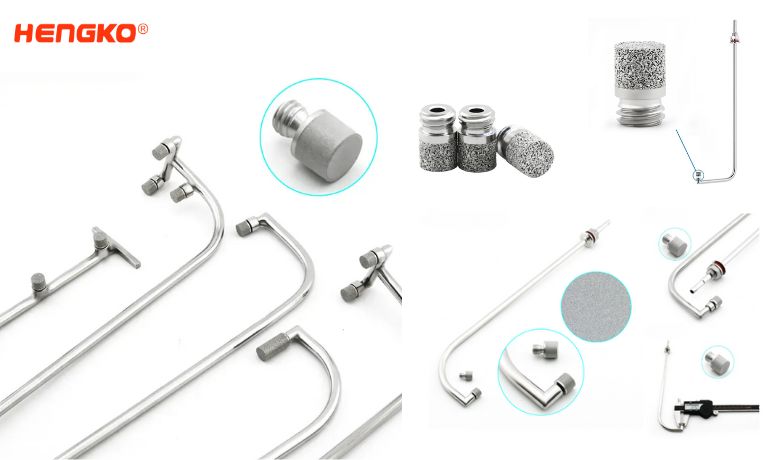-

Stainless Steel 316 Micro Spargers and Filter in Bioreactors and Fermentors
Product Describe The function of the bioreactor is to provide a suitable environment in which an organism can efficiently produce a target product. * Cell b...
View Detail -
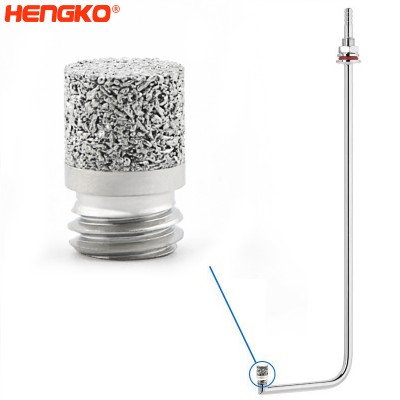
In-tank porous metal spargers or multiple sparger assembly for a large tank, increase g...
Attaches to the tip of the sparger tube, this 316L stainless steel sintered tip is available in a variety of pore sizes. The 5 10 15 50 100 pore frit is the ...
View Detail -
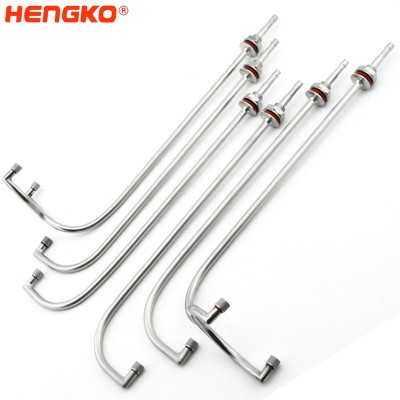
multi – bioreactor sparger for the fermenter sartorius
The Stainless Steel Fermenter|Bioreactor for Your Laboratory A bioreactor is a type of fermentation vessel that is used for the production of various chemica...
View Detail -

Sintered Microsparger in Bioreactor System for Green chemistry industry
The importance of aeration and gas dispersion to achieve good oxygen mass transfer cannot be understated. This is at the heart of the ability of mic...
View Detail -
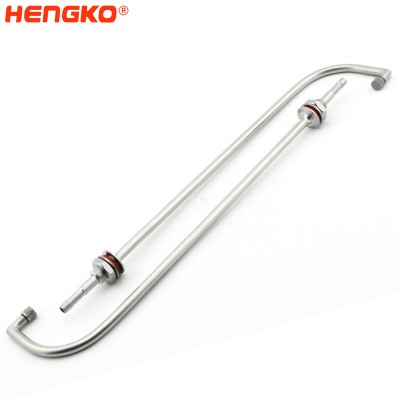
Quick Change Sparger System for Bioreactors and Fermentors Air Sparger Accessories- Mic...
Stainless steel sparger is to supply enough oxygen to the microbes in submerge culture technique for proper metabolism. Each fermentation process requires a ...
View Detail -
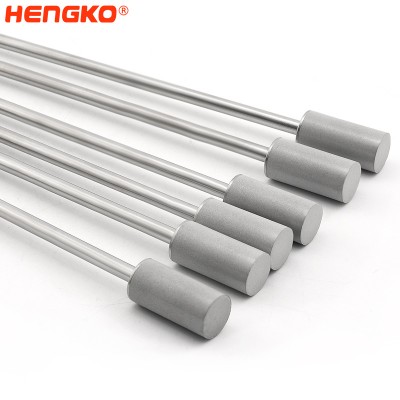
316 L Powder Stainless Steel Metal Frit Spargers Building A Stainless Steel Filtering S...
Product Description This device is particularly good for fermentations that require a large population of yeast. Pilsners (or other beers fermented at low te...
View Detail -

HENGKO sintered porous carbonation stone air sparger bubble diffuser nano oxygen genera...
In bioreactor systems, optimal mass transfer of gases like oxygen or carbon dioxide is difficult to accomplish. Oxygen, in particular, is poorly soluble in w...
View Detail -
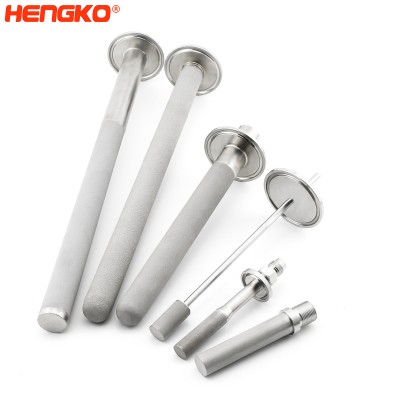
Sintered Sparger Tube with Porous Metal Stainless Steel Tank and In-line Spargers Used ...
Introducing the exceptional HENGKO sintered spargers, the ultimate solution to introducing gases into liquids. This innovative product utilizes thousands of...
View Detail -
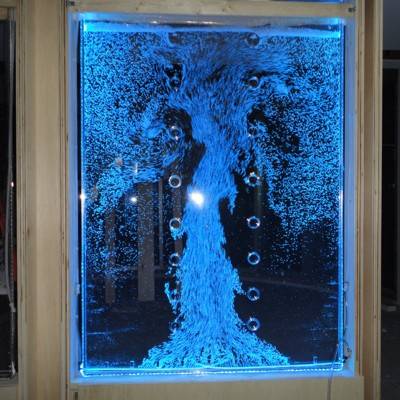
HENGKO micron small bubble air sparger oxygenation carbanation stone used in acrylic wa...
Product Describe HENGKO air sparger bubble stone is stainless steel 316/316L, food grade, with a beautiful appearance, suitable for hotels, fine dining and o...
View Detail -

Sintered Sparger Stainless Steel Material Quick Change for Bioreactor Systems
In bioreactor systems, optimal mass transfer of gases like oxygen or carbon dioxide is difficult to accomplish. Oxygen, in particular, is poorly soluble in w...
View Detail -
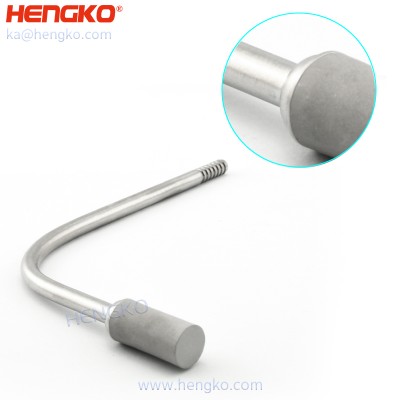
Aeration Stone 20um Sintered Stainless Steel 316L Micro sparger Diffusion Stone Supplier
Hydrogen water is clean, powerful, and with hydron. It helps to purify the blood and gets blood moving. It can prevent many kinds of diseases and improve peo...
View Detail -

Sintered 316l stainless steel bubble hydrogen-rich water generator air sparger
Product Description Hydrogen water is clean, powerful, and with hydron. It helps to purify the blood and gets blood moving. It can prevent many kinds of di...
View Detail -
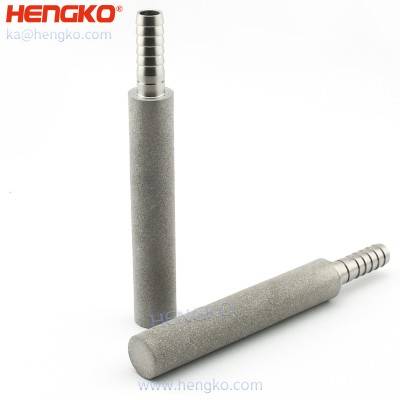
Stainless Steel Ozone Diffuser Stone Fine Air Sparger for Hydrogen Generator
Hydrogen water is clean, powerful, and with hydron. It helps to purify the blood and gets blood moving. It can prevent many kinds of diseases and improve peo...
View Detail -
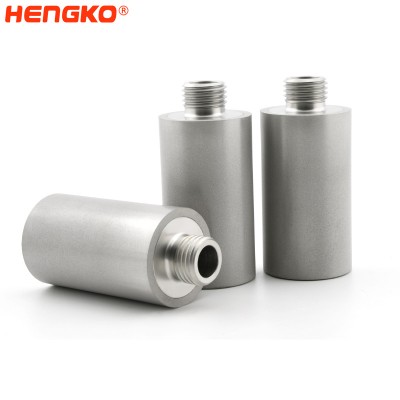
Stainless Steel Aeration/Oxygen CO2 Diffusion Stone Micro Sparger for Microalgae Cultiv...
Micro-diffuser for Microalgae Cultivation, Photobioreactors & sintered sparger for microalgae cultivation is used in laboratories for growing algae. HEN...
View Detail -
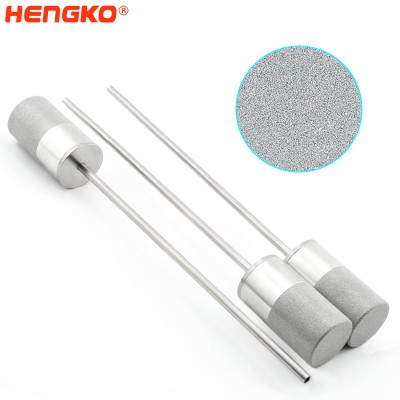
Biotech Removable Porous Frit Micro Sparger for Mini Bioreactor System and Fermentors
Stainless steel sparger used as a cell retention device. The device consists of a metal tube and a sintered metal filter with a pore size of 0.5 – 40 µm. The...
View Detail -

sintered sparger brewing carbonation wort aeration wands (Pure Oxygen) system for homeb...
HENGKO SS air stone is commonly used to aerate the wort before fermentation, which helps ensure a healthy start to the fermentation process. The HENGKO 2.0 m...
View Detail -
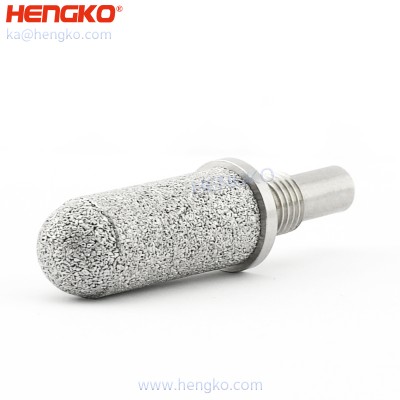
Sintered Metal Sparger of Stainless Steel Porous Sparger Types for Home Brewing Device
HENGKO sintered spargers introduce gases into liquids through thousands of tiny pores, creating bubbles far smaller and more numerous than with drilled pipe ...
View Detail -
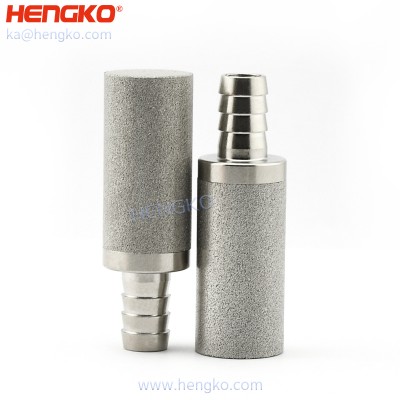
Stainless Steel Sparger 2 Micron Stainless Steel Carbonation Diffusion Stone for Bacter...
Introducing HENGKO's innovative sintered spargers - the ultimate solution for efficient gas-liquid contact in a variety of industries. Our spargers use thou...
View Detail -
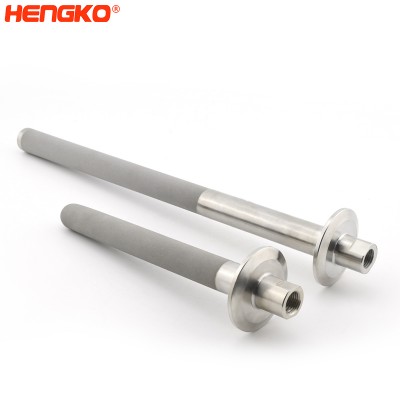
Installed Directly Porous Metal In-Line Sparger Tube Generate Small Bubbles
HENGKO sintered spargers introduce gases into liquids through thousands of tiny pores, creating bubbles far smaller and more numerous than with drilled pipe ...
View Detail -

Sintered porous micron stainless steel spargers homebrew wine wort beer tools bar acces...
HENGKO sintered spargers introduce gases into liquids through thousands of tiny pores, creating bubbles far smaller and more numerous than with drilled pipe ...
View Detail
What is Frit Sparger, Why Use Frit Sparger ?
It seems there might be some confusion regarding the term "Frit Sparger." From the question, I infer that you are referencing a component typically used in laboratory or industrial settings related to fluid dynamics. Let me provide you with some context on "frits" and "spargers" individually:
1. Frits:
* A frit is typically a porous disc or plate, often made of sintered glass, ceramic, or metal.
* It can be used as a barrier to prevent solid particles from passing while allowing liquids or gases to flow through.
* In chromatography systems, for example, frits can be found in columns to hold packing material in place while allowing solvent (mobile phase) to flow through.
2. Spargers:
* A sparger is a device that introduces gas into a liquid medium.
* The primary purpose is to increase the surface area of the gas exposed to the liquid, facilitating mass transfer, e.g., in bioreactors where oxygen might be sparged into a culture media for microorganisms.
* Spargers can come in many forms, such as porous stones, tubes with holes, or plates.
When combining these concepts, a "frit sparger" would be a sparger made from a porous material like a frit. The advantages of using such a device could include:
1. Uniform Distribution: Due to its porous nature, a frit can distribute gas uniformly across its surface, ensuring even gas bubble formation.
2. Controlled Bubble Size: The size of the pores in the frit can influence the size of the gas bubbles produced. Smaller bubbles have a higher surface area relative to their volume, which can improve mass transfer efficiency.
3. Prevention of Clogging: Frits can prevent larger particles from blocking the flow of gas, ensuring a consistent and continuous gas supply.
4. Durability: Sintered materials, like those used in frits, are typically resistant to chemical attack and can withstand regular use for extended periods.
If you are considering using a frit sparger for a particular application, it would be essential to choose the right material and pore size to suit your needs. Additionally, consulting with experts or suppliers in the field can provide more tailored recommendations.
Main Features of Frit Sparger ?
A frit sparger combines the properties of both frits and spargers. Here are the main features of a frit sparger:
1. Material Composition:
Frit spargers are often made of sintered materials like glass, ceramic, or stainless steel, which grant them chemical resistance and mechanical durability.
2. Porous Structure:
The primary feature of a frit sparger is its porous nature. The tiny pores throughout the frit allow for the passage of gas but are often fine enough to prevent larger particles or contaminants from passing through.
3. Controlled Bubble Size:
The size of the pores in the frit determines the size of the gas bubbles it produces. Typically, the smaller the pores, the smaller and more consistent the bubble size, which can improve mass transfer efficiency.
4. Uniform Gas Distribution:
The even distribution of pores across the surface of the frit ensures that gas is introduced uniformly into the liquid medium. This uniformity enhances mixing and ensures consistent gas-liquid contact.
5. Reduced Clogging Risk:
The design of frit spargers often minimizes the risk of clogging. Even if a few pores get blocked, the sparger can continue to function effectively because of its many other pores.
6. Chemical Resistance:
Depending on the material from which the frit sparger is made, it can be highly resistant to a range of chemicals, making it suitable for various applications.
7. Thermal Stability:
Certain frit materials can withstand high temperatures, making them ideal for processes that require heating or have extreme temperature variations.
8. Mechanical Strength:
The sintering process, especially with materials like stainless steel, imparts a good degree of mechanical strength to the frit sparger, making it robust and long-lasting.
9. Ease of Cleaning:
Most frit spargers can be cleaned using standard cleaning procedures. Depending on the material, they might be autoclavable or compatible with various cleaning agents.
10. Versatility:
Frit spargers can be designed for various applications, from bioreactors in biotechnology to gas introduction in chemical processes.
When selecting a frit sparger, it's crucial to consider the specific requirements of the intended application, such as chemical compatibility, desired bubble size, and flow rate. This ensures that the sparger operates optimally and lasts longer.
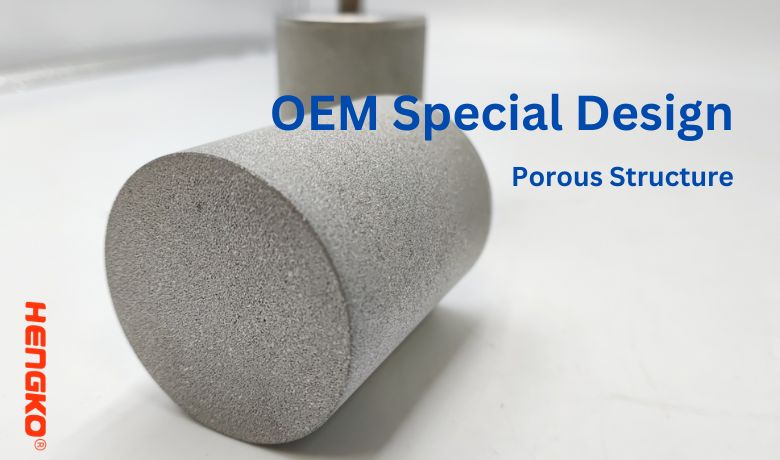
Types of Frit Sparger ?
Frit spargers are classified based on their material composition, pore size, configuration, and intended use. Here are some types of frit spargers:
1. Material-Based Types:
* Glass Frit Spargers: Typically made from sintered glass, these spargers are chemically inert to many substances, making them suitable for various laboratory applications.
* Ceramic Frit Spargers: Made from sintered ceramics, they offer good thermal resistance and can be used in applications with high temperatures.
* Stainless Steel Frit Spargers: These offer excellent durability and resistance to both corrosion and high temperatures. They are often used in industrial applications.
2. Pore Size-Based Types:
* Fine Pore Frit Spargers: Produce very small bubbles and are suitable for applications where high mass transfer efficiency is required.
* Medium Pore Frit Spargers: Offer a balance between bubble size and flow rate.
* Coarse Pore Frit Spargers: Used when larger bubble sizes are acceptable or when higher flow rates are required.
3. Configuration-Based Types:
* Disk Frit Spargers: These are flat, disk-shaped spargers that can be placed at the bottom of a vessel.
* Tubular Frit Spargers: These are cylindrical in shape and can be used vertically or horizontally in a system.
* Stem Frit Spargers: Attached to a stem or tube, they allow for deeper placement into a vessel.
4. Use-Based Types:
* Laboratory Frit Spargers: Designed for lab-scale applications and experiments. They are typically smaller and may come with specific connectors or fittings for lab equipment.
* Industrial Frit Spargers: Larger and built for industrial applications. They are designed to handle higher flow rates and are often made from more robust materials.
* Bioreactor Frit Spargers: Specifically designed for bioreactor applications where efficient oxygen transfer to microbial cultures is crucial.
5. Specialty Types:
* Anti-Clogging Frit Spargers: Designed with features to minimize clogging, like larger or specially-shaped pores.
* Chemically Resistant Frit Spargers: Made from materials that can withstand aggressive chemicals or solvents.
When selecting a frit sparger type, it's essential to consider the specific requirements of your application, such as the desired bubble size, chemical compatibility, temperature range, and intended scale (laboratory vs. industrial). Manufacturers often provide detailed specifications to help users choose the most appropriate frit sparger for their needs.
Why L-Shape Sparger of Frit Sparger ?
There are a few reasons why L-shaped frit spargers are commonly used in bioreactors:
* Greater surface area:
The L-shape design provides a larger surface area for gas-liquid contact compared to a straight tube sparger.
This can lead to improved mass transfer efficiency and higher oxygen dissolution rates.
* Uniform gas distribution:
The L-shape design also helps to promote more uniform gas distribution throughout the bioreactor.
This is important for maintaining a consistent cell culture environment.
* Reduced clogging:
The L-shape design can help to reduce clogging of the frit sparger, especially in bioreactors that use high cell density cultures. This is because the L-shape helps to prevent the frit from becoming buried in the cell culture medium.
In addition to these advantages, L-shaped frit sparcers are also relatively easy to install and maintain.
Here is a comparison of L-shaped frit spargers and straight tube frit spargers:
| Feature | L-shaped frit sparger | Straight tube frit sparger |
|---|---|---|
| Surface area | Greater | Smaller |
| Gas distribution | More uniform | Less uniform |
| Clogging resistance | Better | Worse |
| Ease of installation | Easy | Easy |
| Ease of maintenance | Easy | Easy |
Overall, L-shaped frit spargers offer a number of advantages over straight tube frit spargers, making them a good choice for a variety of bioreactor applications.
Application of Frit Sparger ?
Frit spargers have a variety of applications across different industries and research settings, thanks to their ability to introduce gases uniformly into liquid media. Here are some of the primary applications:
1. Biotechnology & Fermentation:
* Bioreactors: Frit spargers provide efficient oxygen transfer in bioreactors, which is crucial for cell growth in microbial cultures. They ensure uniform distribution of oxygen or other gases in the culture medium, improving cell growth rates and productivity.
2. Chemical Industry:
* Gas-Liquid Reactions: In reactions where a gas is a reactant, frit spargers can be used to introduce the gas uniformly into the liquid phase, improving reaction efficiency.
* Hydrogenation Processes: When hydrogen gas is bubbled through a liquid medium containing a catalyst, frit spargers can ensure even distribution of the gas, optimizing reaction rates.
3. Laboratory Research:
* Gas Introduction in Experiments: Frit spargers are commonly used in laboratory settings to introduce gases into solutions or reactions, ensuring even distribution and improved experimental consistency.
* Solvent Degassing: By bubbling an inert gas (like nitrogen) through a solvent using a frit sparger, dissolved oxygen and other unwanted gases can be removed.
4. Environmental:
* Wastewater Treatment: Frit spargers can introduce air or oxygen into wastewater, aiding in the breakdown of organic pollutants by microbes.
* Aquaculture: Frit spargers are used to aerate tanks and ponds, ensuring optimal oxygen levels for fish and other aquatic organisms.
5. Pharmaceutical Industry:
* Cell Culture: Similar to bioreactors in biotechnology, frit spargers are used in the pharmaceutical industry for cell culture applications, especially for producing therapeutic proteins or other biologics.
* Purification Systems: In processes where gases need to be introduced for stripping or purification, frit spargers can ensure efficient gas-liquid contact.
6. Food and Beverage Industry:
* Carbonation: Frit spargers can be used to introduce carbon dioxide into beverages, ensuring even distribution and proper carbonation levels.
* Fermentation: In the production of beer, wine, or other fermented beverages, frit spargers can be used for aeration or to introduce other gases as needed.
7. Petrochemical Industry:
* Catalytic Processes: Many petrochemical reactions involve the use of gases as reactants. Frit spargers can be employed to introduce these gases uniformly into reactors.
8. Aerospace and Defense:
* Fuel Systems Testing: Frit spargers can be used in testing setups where controlled introduction of gases into liquids is required.
These are just a few of the myriad applications for frit spargers. When selecting a sparger for a specific application, it's essential to ensure its compatibility with the chemicals in use, the desired bubble size, and other specific requirements.
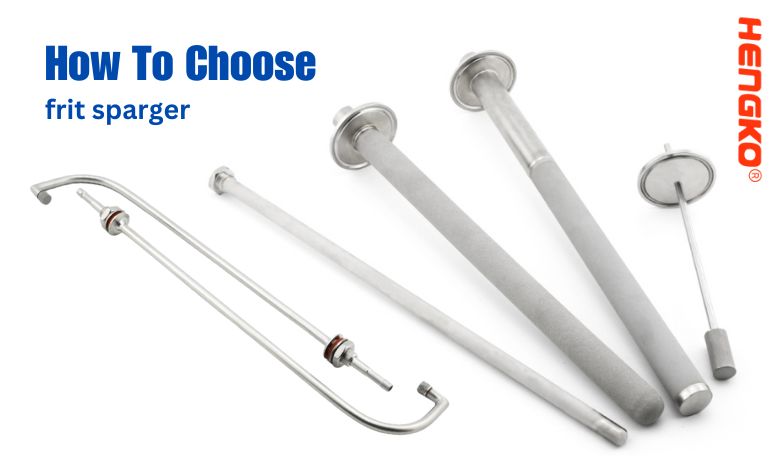
How to Choose Right Frit Sparger for Your Sparger System ?
When You Choosing the right frit sparger for your system requires careful consideration of several factors. Here's a step-by-step guide to help you make the right choice:
1. Understand Your Application:
* Purpose: Are you looking to maximize oxygen transfer, ensure even gas distribution, remove dissolved gases,
or achieve some other specific goal? Your primary objective will heavily influence your choice.
* Scale: Determine if you need a sparger for a laboratory-scale experiment, pilot-scale operation, or a full-scale industrial process.
2. Material Compatibility:
* Check the compatibility of the sparger material with the gases and liquids you'll be using.
* Consider factors like chemical reactivity, temperature resistance, and potential leaching. Common materials include sintered glass, ceramic, and stainless steel.
3. Pore Size:
* The pore size determines the bubble size. Smaller pores produce finer bubbles, which offer higher gas-liquid surface area and thus better mass transfer.
* For applications requiring efficient mass transfer, like in bioreactors, finer bubbles are generally preferred.
* For other applications where the flow rate is more critical or where clogging might be a concern, a coarser pore might be more appropriate.
4. Flow Rate:
Determine the required gas flow rate for your process. Ensure the chosen sparger can handle this flow rate without excessive backpressure or potential damage.
5. Configuration & Dimensions:
* Depending on the design of your vessel or system, you may need a disk, tubular, or stem frit sparger.
* Ensure the sparger's size and shape fit appropriately in your system. Consider factors like immersion
depth and the sparger's overall size in relation to the vessel.
6. Clogging Concerns:
* If the liquid medium contains particulates or if biofouling is a concern (as in some bioreactors), consider a
design or material that reduces the likelihood of clogging.
* Regular maintenance and cleaning can also help mitigate clogging issues.
7. Integration with Existing Equipment:
Ensure the sparger can be easily integrated into your current system. Check connection types, sizes, and compatibility.
Once you've taken all these factors into account, you should be well-equipped to choose the right frit sparger for your system. It's always a good practice to consult with the manufacturer or a technical expert to verify your choice before making a final decision.
Discover Customized Excellence with HENGKO!
Why go generic when HENGKO can craft a Frit Sparger tailored just for you?
Dive into the world of superior OEM solutions with our special Frit Spargers.
Precision Meets Performance - Benefit from HENGKO's unparalleled expertise and dedication to perfection.
Tailored to Your Needs - Unique configurations? Specific materials? We're on it!
Start Your Custom Journey Today !
- Don't wait. Email our expert team at ka@hengko.com and unlock the true potential of your sparger system.
